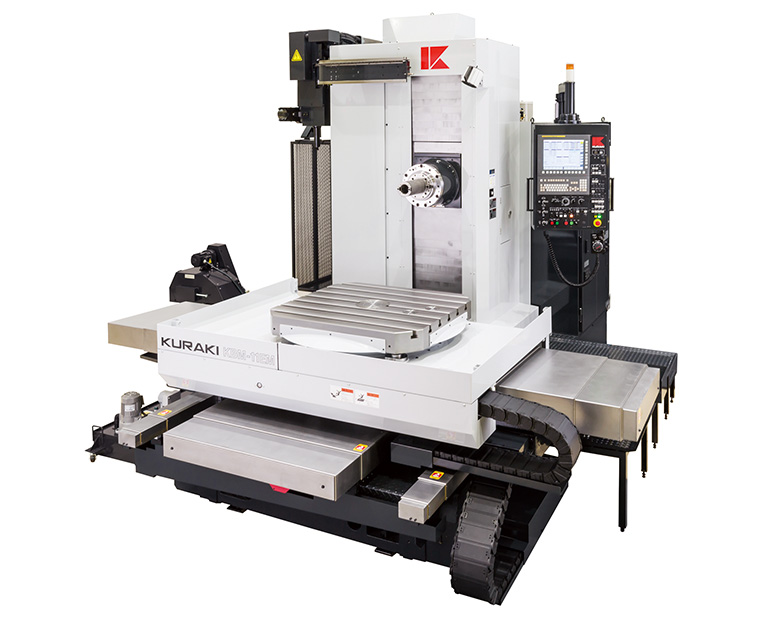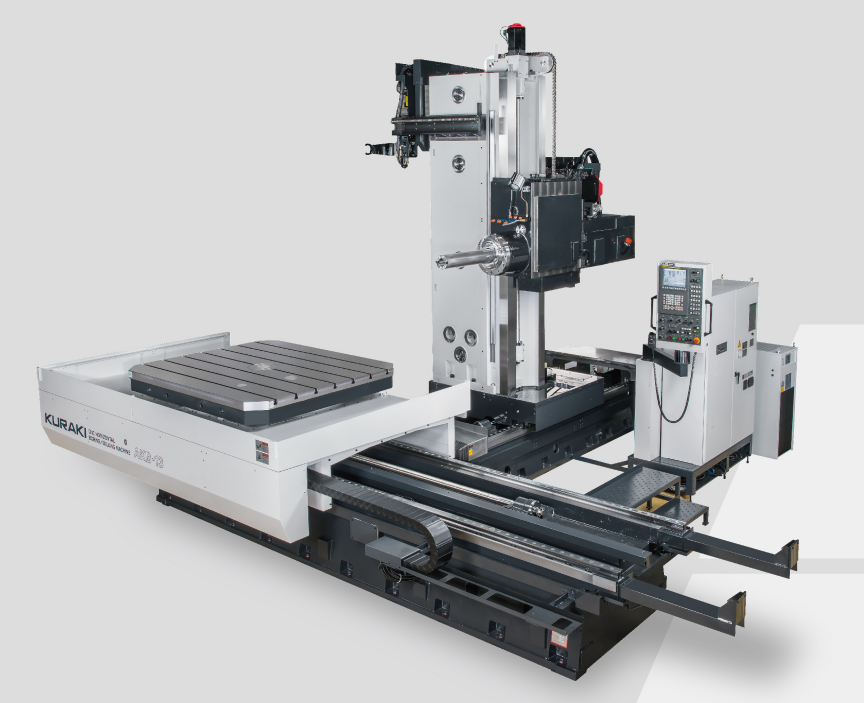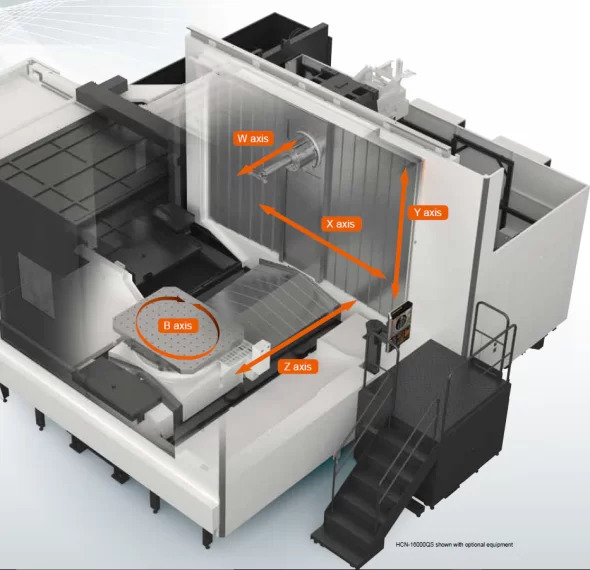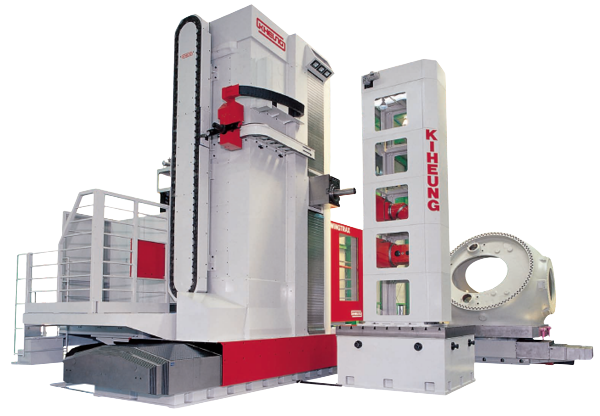The boring machine is one of the machine tools is using to bore holes with the boring sleeve(or the quill) in large and heavy parts.
In a horizontal boring machine, the workpiece is supported on a table, and the tool moves in the direction of a horizontal axis. A horizontal boring machine can perform boring, reaming, turning, threading, facing, milling, grooving, recessing and many other operations with suitable tools.
The following table shows the cuttting capacity of a horizontal boring machine.
The following table shows the accuracy of a horizontal boring machine.
| Axes | Positioning Accuracy | Repeatability |
|---|---|---|
| X / Y / Z | 0.010 mm(0.004") | 0.006 mm(0.002") |
| W | 0.015 mm(0.006") | 0.010 mm(0.004") |
2-1. Bed type
Bed type refers to the boring machine with a table on the bed, the table forms the X or Z axis. Unlike this, the floor type is a structure composed of column forming the X-axis and other moving axes on the column. The bed types are further divided into table type, planer type, and reversed-T type.
The bed is equipped with a saddle to form the Z-axis, and the saddle is equipped with a table to form the X-axis. The column is fixed, and the milling spindle head is mounted on the column to form the Y-axis and moves up and down.
The bed is directly equipped with a table to form the X-axis, and the column is mounted on the bed to form the Z-axis. The milling spindle head is mounted on the column to form the Y-axis and moves up and down.
The bed is directly equipped with a table to form the Z-axis, and the column is mounted on the bed to form the X-axis. The milling spindle head is mounted on the column to form the Y-axis and moves up and down.
The column is mounted on the bed to form the X-axis, while the slide is mounted on the column to form the Y-axis and moves up and down. The ram is mounted on the slide, forming the Z-axis. The table and main machine are structurally separated.
A horizontal boring machine with a table as the center and a symmetrical arrangement of milling spindles.
2-3-2. Moving column, opposed heads type horizontal boring machine




